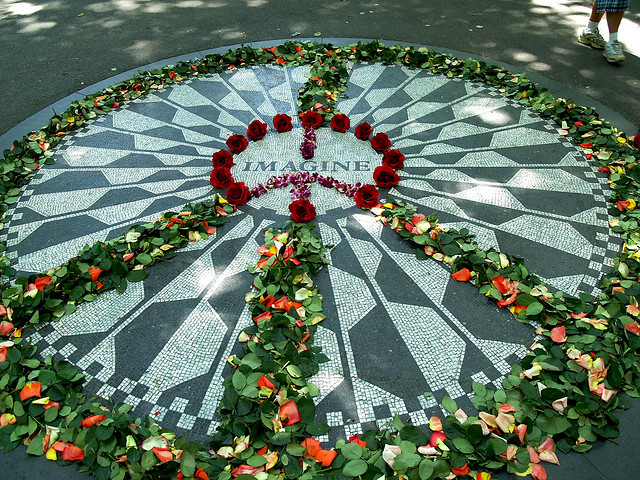If you’re a South Asian or a Hindu, you’re probably familiar with rangoli art already, in that you’ve been cajoled at some point in your life by your mother into squatting on a newly-cleaned floor on Diwali morning and just letting your creativity loose. Or if not that, you probably know it by some rangoli-making school competition in the fifth grade that somehow left all your limbs and clothes dirtier and yet more colourful than they’ve ever been.
If you’re not one of these (un)fortunate few however, we’re here to help. Rangoli is the traditional South Asian art of making decorative patterns with colour. According to custom, it’s made on the festival of Diwali to invite the goddess of wealth into one’s home. While it’s usually made with flowers or rice grains, anything colourful works (as you’ll soon find) and people today use coloured powder more than anything else.
Right. Now that the boring stuff is out of the way, we can get to the good bit. Here are 7 amazing artists you must check out, that are making fun and creative art with rangoli.
1. Drawing to Dust
Artist Minar Patil from Palghar, Maharashta makes unbelievably realistic rangoli. Looking upon his work, it’s hard to believe that the images are just coloured dust, as his attention to detail and shading are incredible. Working primarily with portraits, he does not shy away from surrealism either, rendering his own version of the famous surrealist painting of the eye. It’s disheartening to think of the impermanence of this striking art, knowing it will just be a heap of dust after a few hours. Check out more of his beautiful work at his website, which ranges from landscapes to political satire (Modi and Rahul Gandhi in a cock fight!).
Image Courtesy- Imgur and Minar Patil
2. Treading Water
Art with water seems to be fast becoming a recurring theme with us, as we have featured two articles previously that experiment with it. Artist Indhu A. too likes to use water to make her rangoli, to give it a stunning, reflective look. She first experimented with painting on water expecting it to go terribly and just become a runny mess, but with clever use of oil and talc, her trial was a success. She posts tutorials on making water rangoli, and explains her method of using oil and ice cold water. More of her work can be accessed at ikolam, where she shares new rangoli art, and sulekha, where she is represented.
Images courtesy- ikolam
3. Strawberry Fields Forever
Yeah, you read that right, all you Beatles’ fans. But what does Strawberry Fields Forever have to do with rangoli, you ask?
Everything! The John Lennon memorial in New York City’s Strawberry Fields, Central Park is just one huge, eternal rangoli, with different decorations placed on it all the time and anyone free to adorn it as they like. It is ever-changing and usually colourful, thus capturing the true spirit of rangoli perfectly. In addition, the positive vibe of the place is liberating and optimistic, with people from all walks of life coming together, and it is therefore not too far from the aura of the Hindu festival.
Images Courtesy- Central Park
4. Clucking Festive
So connecting The Beatles to rangoli wasn’t unconventional enough for you? We can handle that; that’s why we’ve also brought you rangoli art à la fast food chain Nando’s. The restaurant, as part of their endeavour to make the brand relatable to Indian customers, made a Diwali card that includes rangoli. But wait, this isn’t even the cool bit! They made this rangoli using…
…chili powder, turmeric, rice, chilies, lentils, salt, sugar and various other ingredients found in Nando’s restaurants to create the traditional art piece…
in the words of their artist, Marli Joubert from Johannesburg. The work is quirky as well as a creative strategy, and is a perfect way to get the Diwali feels going.
Image Courtesy- Behance
5. Brightly Bamboo(zling)
This rangoli, that incorporates bamboo, is more environmentally-friendly than most. The Vinod V Nambiar piece is both unconventional and attractive, invoking images of nature and birth. With the mushroom-like growths sprouting out the middle and traditional patterns in coloured corn powder around it, this rangoli merges the innovative and the mundane. With its use of flowers and plants, too, the bright work invokes sylvan beauty. Look at Nambiar’s website for more such gorgeous art.
Image Courtesy- SloDive
6. Go Bananas
This rangoli by the organisation Indian Heritage uses South Indian style patterns but in an extremely unusual way. The patterns have been created with household items, including jewelry and food (such as different sweets and fruit). The use of paan leaves, coins, banana, mehendi (henna) cones, soap, talcum powder, bangles and flower petals sets this artwork apart.
Image Courtesy- Home Make-over
7. Stone, Paper (and Scissors)
Artists Divya Joshi and Gayatri Wakankar make rangoli art with unconventional mediums such as paper, stones and beads. Paper quilling, the fascinating art that we’ve covered in a previous article, has been employed by Joshi in her art, where she rolls, shapes and glues thin strips of paper. Wakankar uses attractive beads to create intricate, ethnic patterns. The resplendent art incorporates the use of gold threat and sequins as well.
Image Courtesy- HomeDecor
These artists take a festive South Asian custom to an unconventional, eccentric level. Their art is fun, cheeky, and adds new excitement to tradition.
Try following some of the tutorials or techniques mentioned here when making your rangoli this Diwali, the 11th of November and add a new brightness to your festival of lights!




















